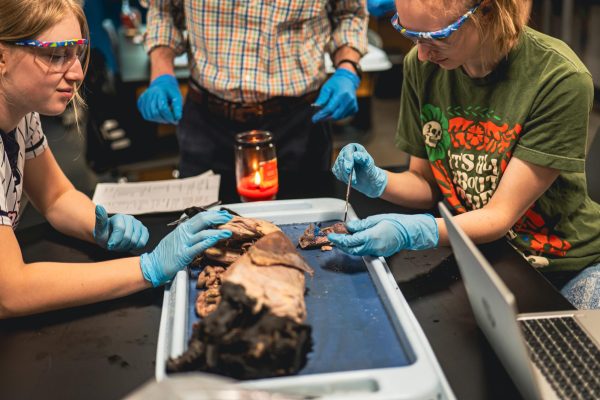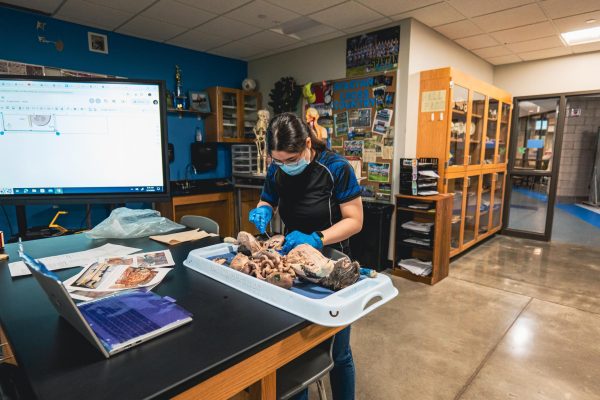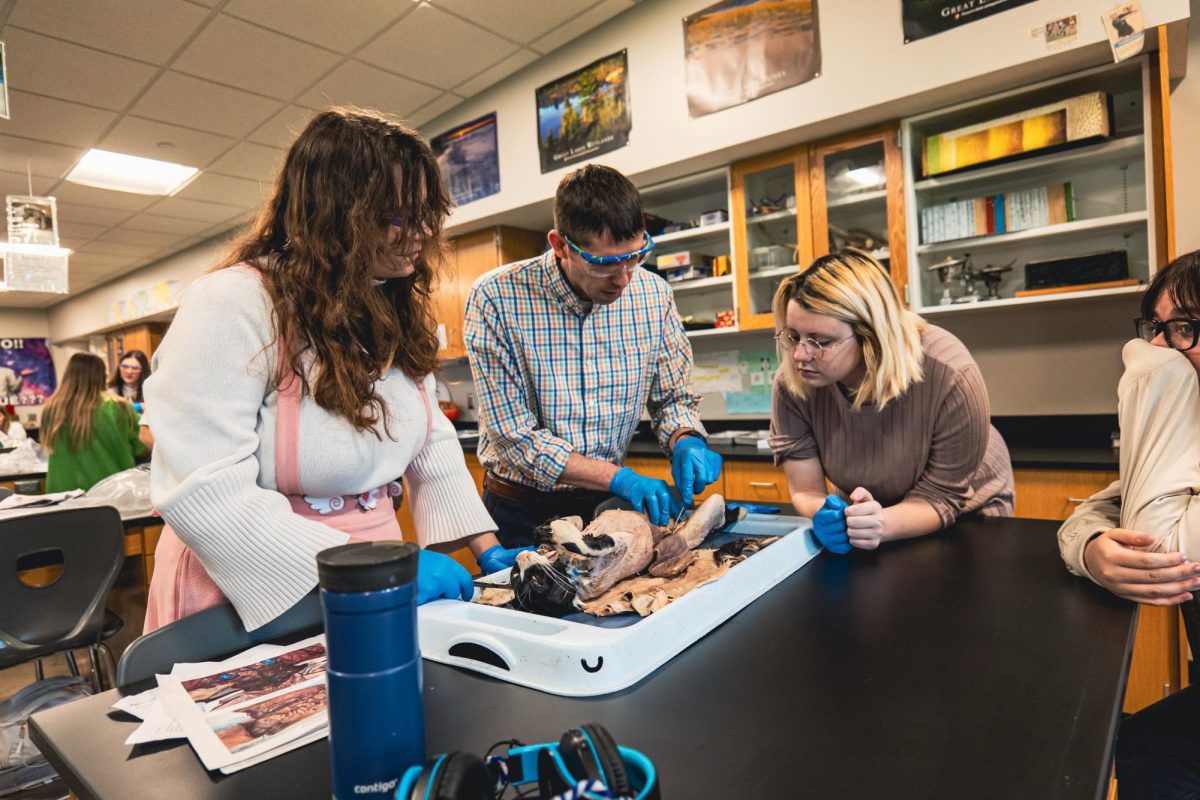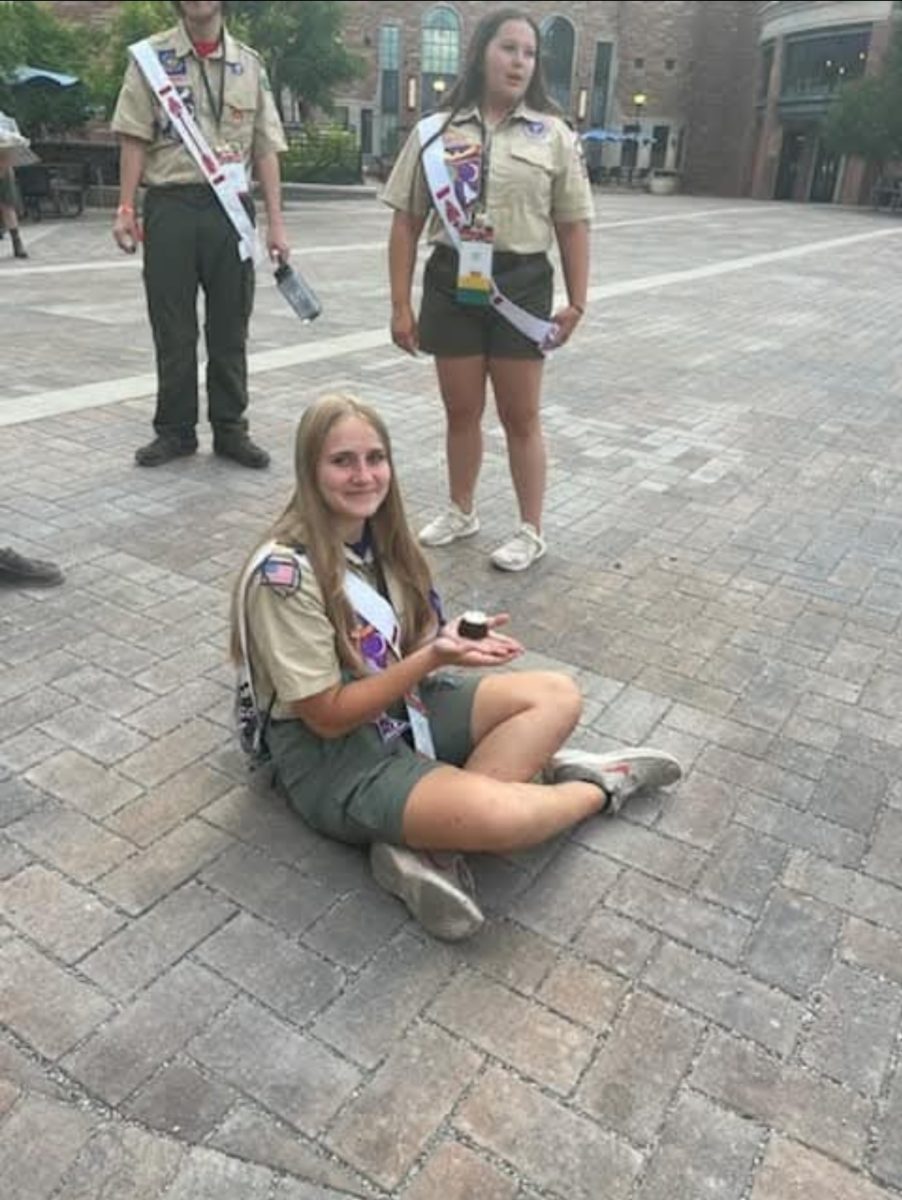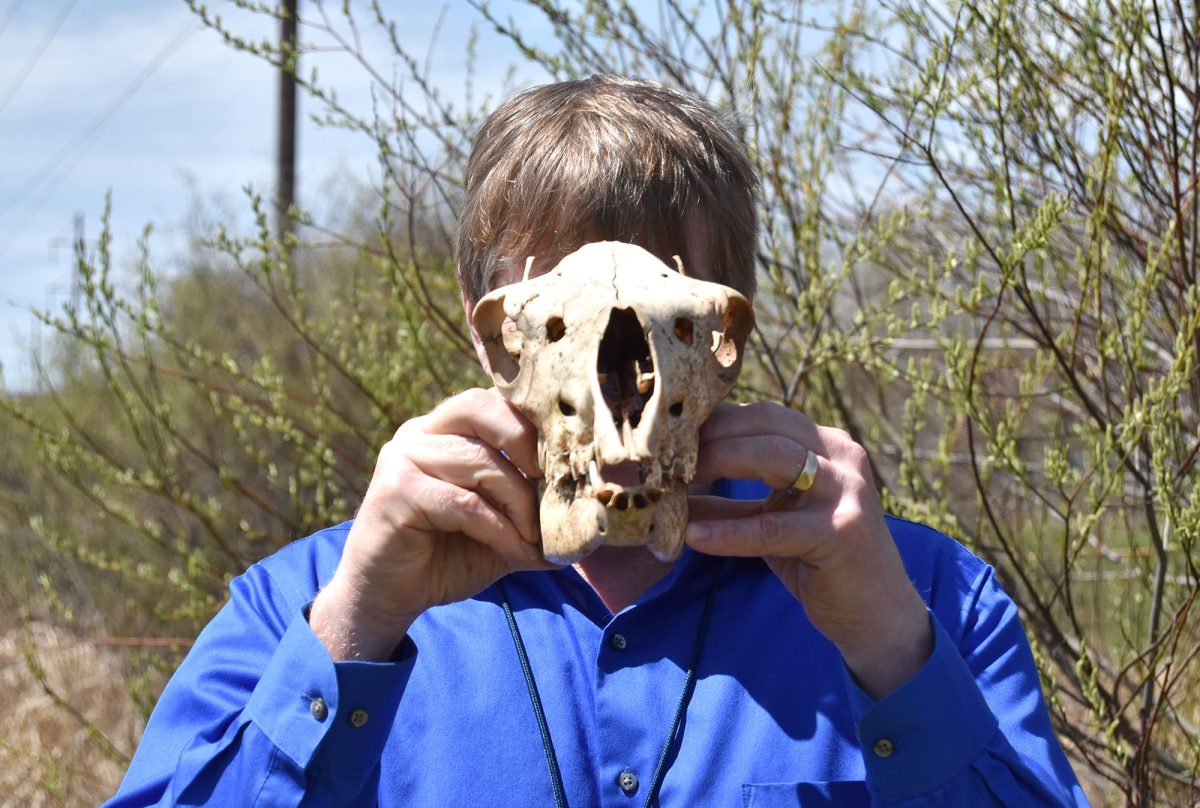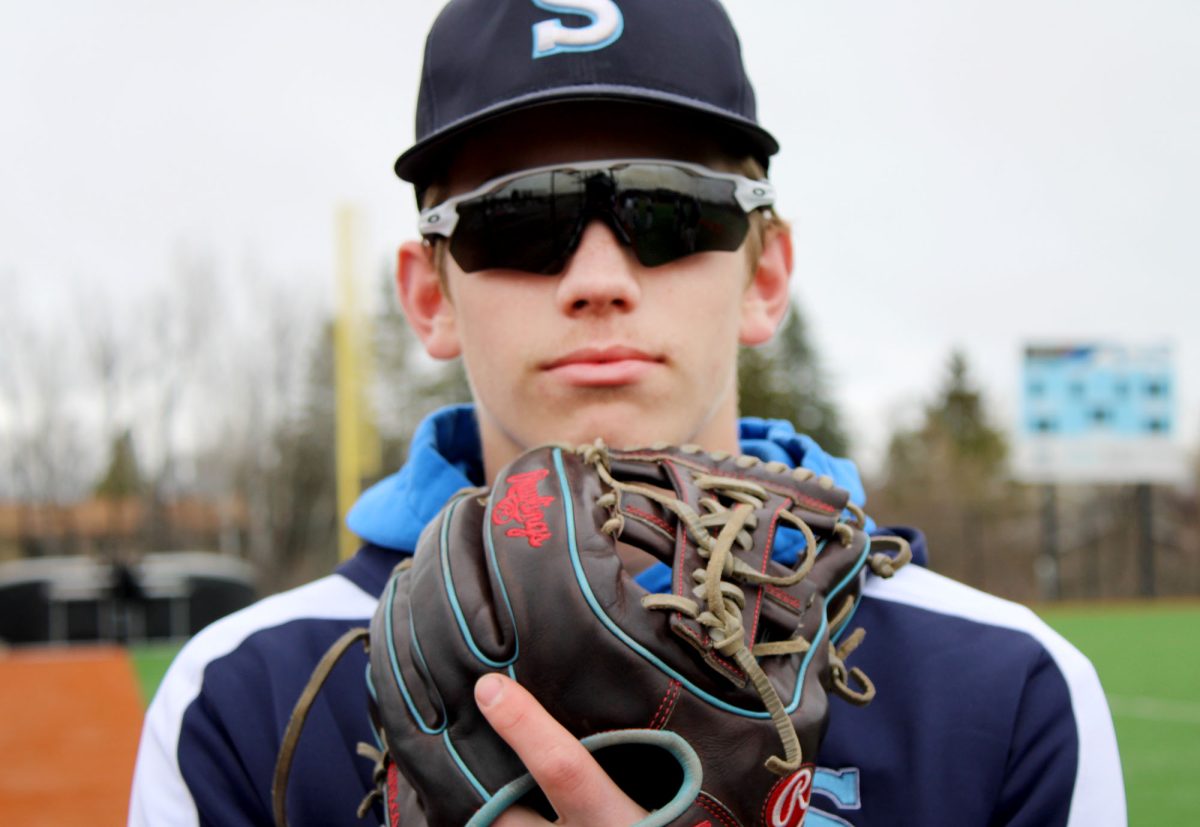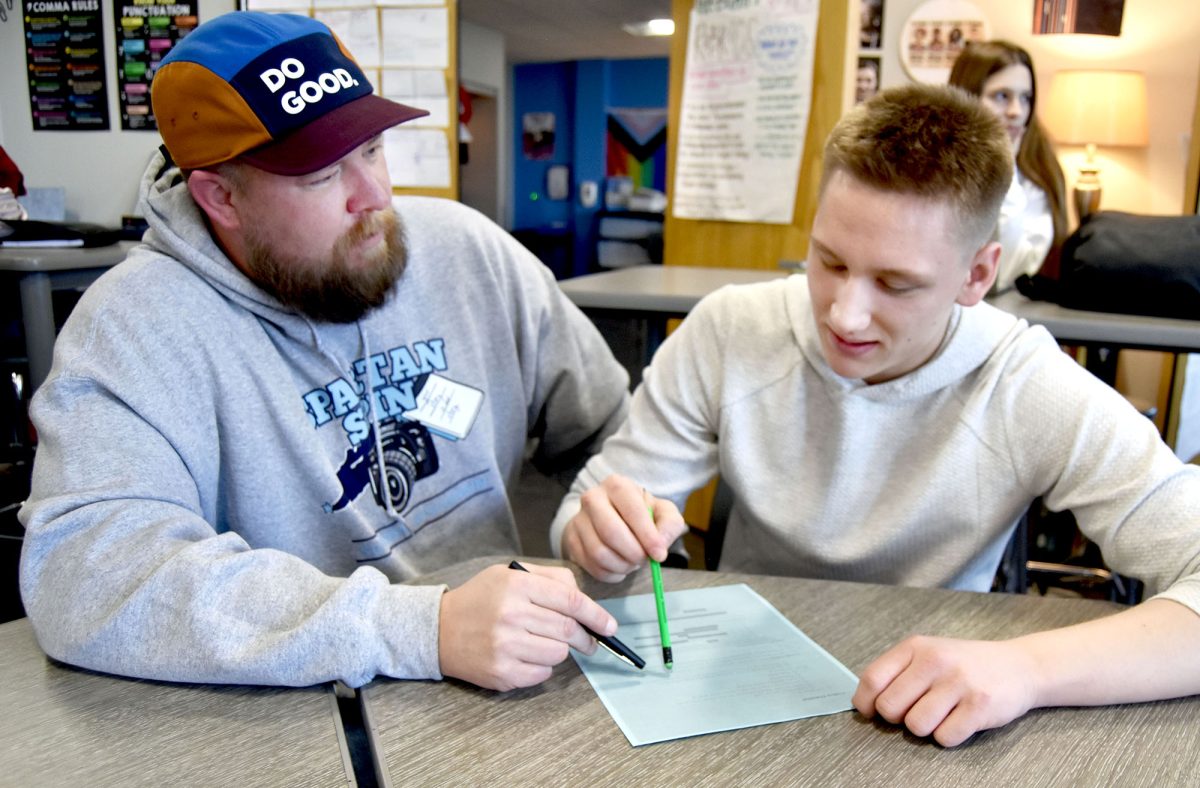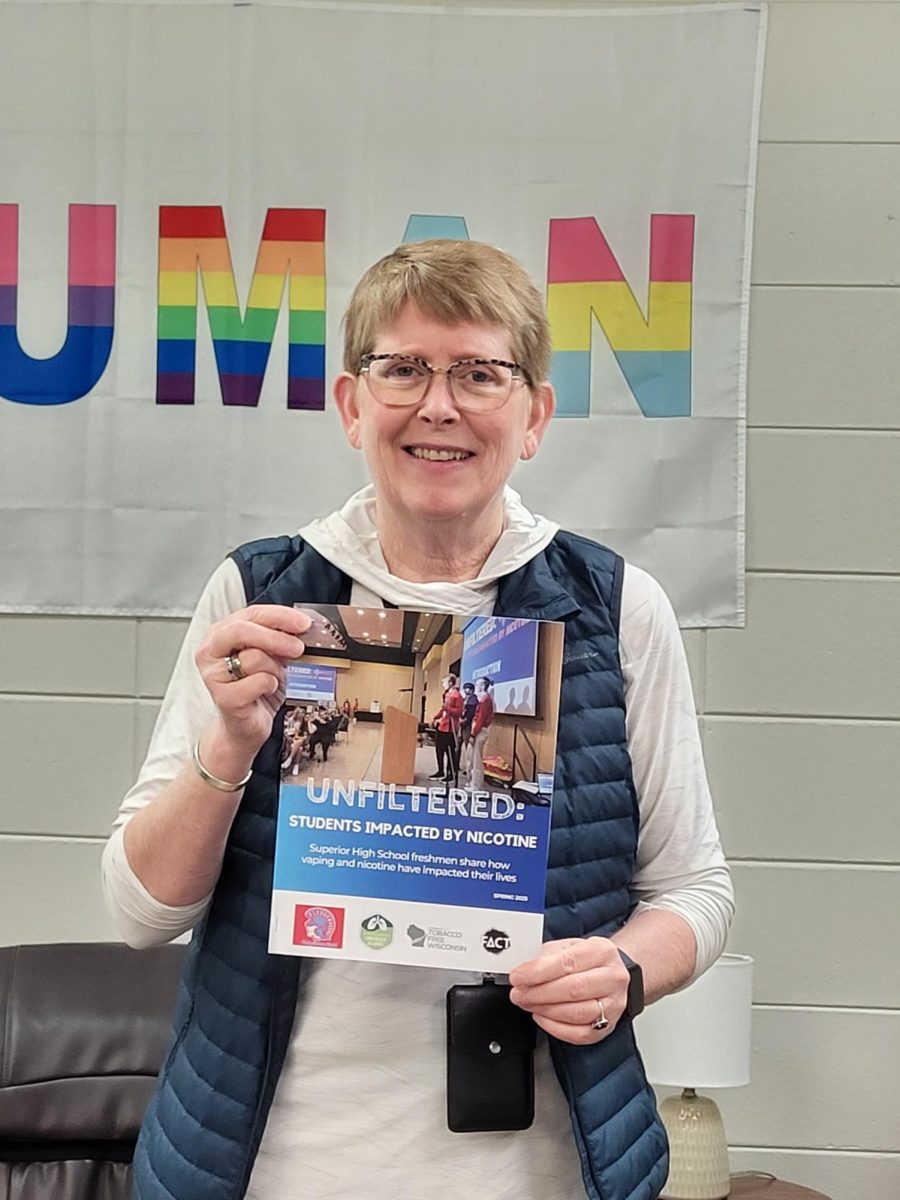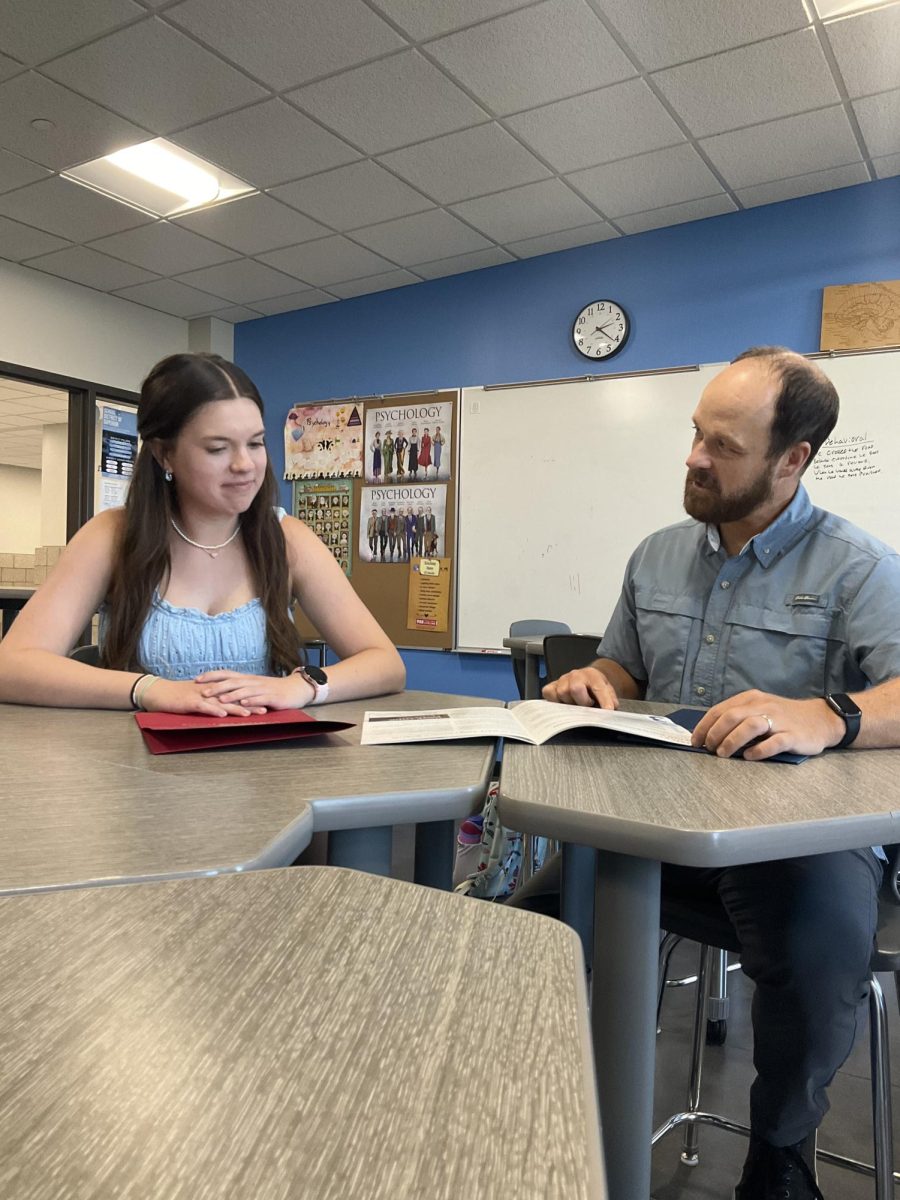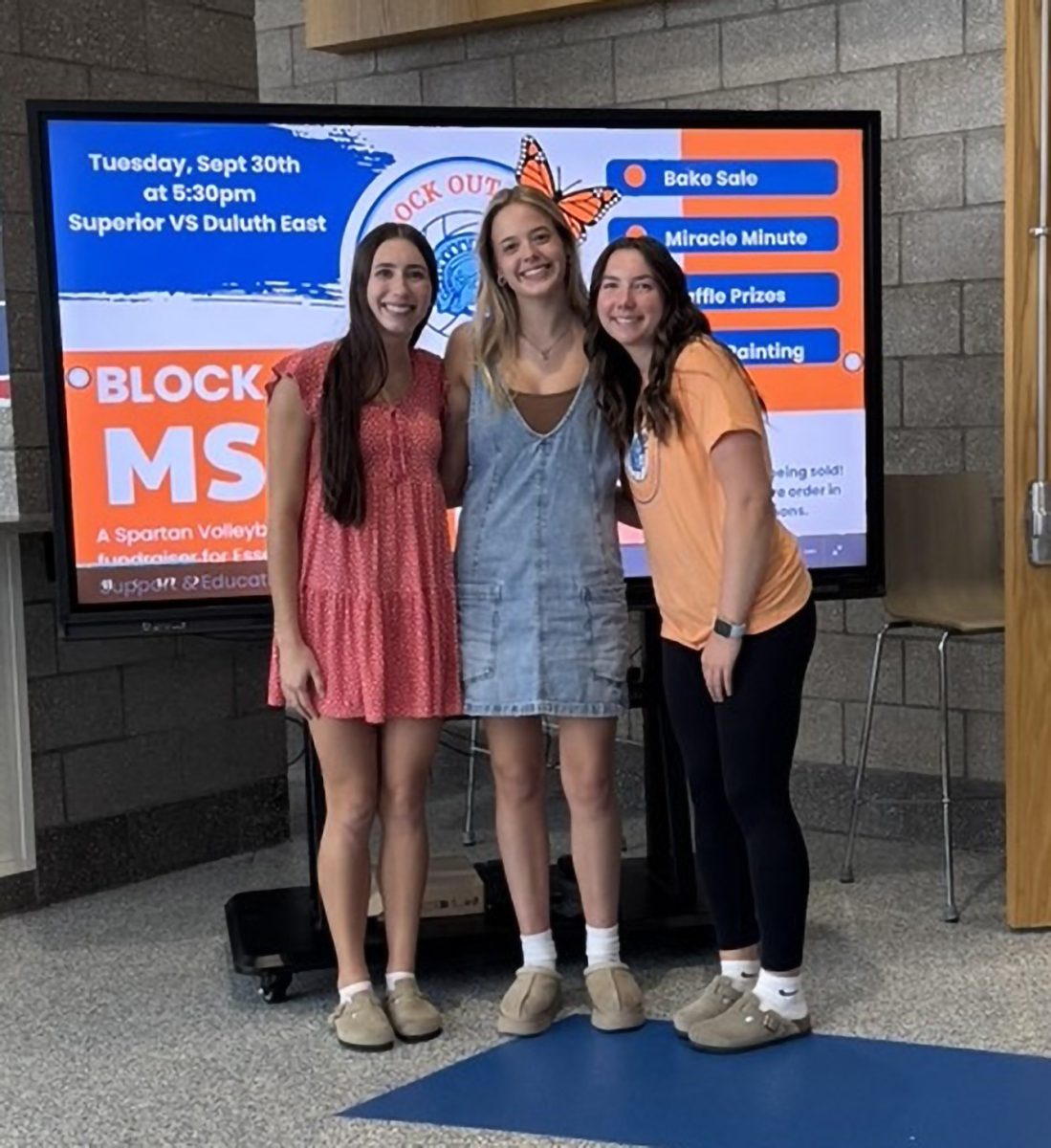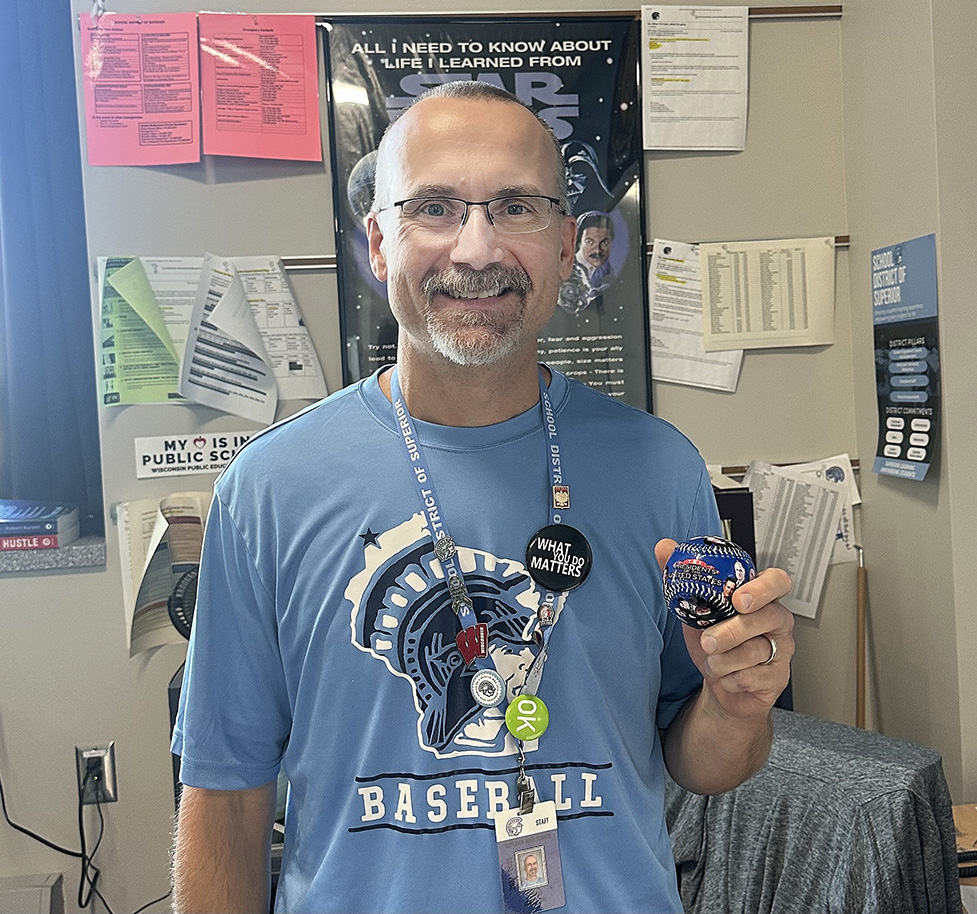All I could think about was the smell as I walked into Lee Sims’ Human Anatomy and Physiology class. Holding my camera in my hand, I walked around to each table observing each cat. Once again, the smell filled the room. Snapping each photo, I noticed the complexity of all of these cats.
I had the chance to talk with Sims about the purpose of this lab.
“I think it’s a pretty standard main dissection at the end of the year for any human anatomy and physiology class,” Sims said.
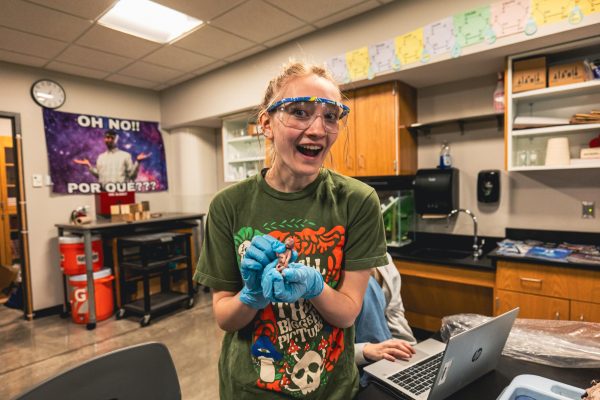
(Josiah Payne)
Unlike normal Biology classes, the Human Anatomy and Physiology course gives a deeper look into specific types of mammals and their body structures.
“So we do, we did a sheep brain, a sheep eye, a sheep heart, and then the cat. So I guess the cat dissection does last two full weeks. So it is 10 days, nine days of the dissection than one review,” Sims said.
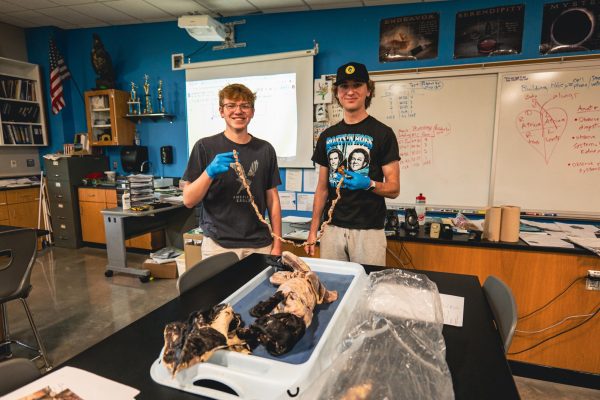
I thought to myself as I was walking around and observing the cats: where do these animals come from? So, I brought the question up to Sims.
“We buy from a company, bio biological corporation or something. That’s where all the biology department gets their crayfish worms, frogs stuff, too,” Sims said.
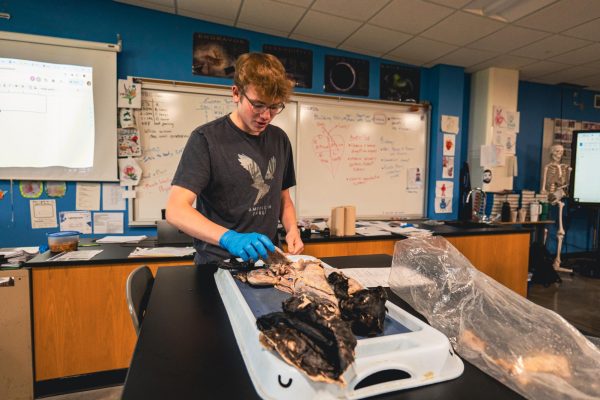
I also wondered why cats were the animals of choice for these labs. As a biology student two years ago, we dissected pigs because of the internal structure is similar to the human body.
“And we do adult cats, for one, they’re a mammal that is very similar, like they have all the same structures mostly for all the same functions,” Sims added on.
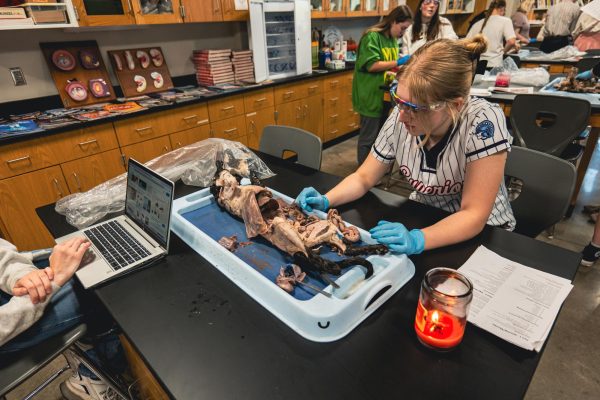
(Josiah Payne)
As I took a couple more laps around the classroom, I noticed the faces on many of the students. While some were engaged in the lab, others were not too pleased with the smell and messiness from the lab.
“And it’s definitely eye opening to see, you know, throughout the year, we look at body systems, pretty much in isolation of each other, like we’re gonna learn about the skeletal system,” Sims stated.
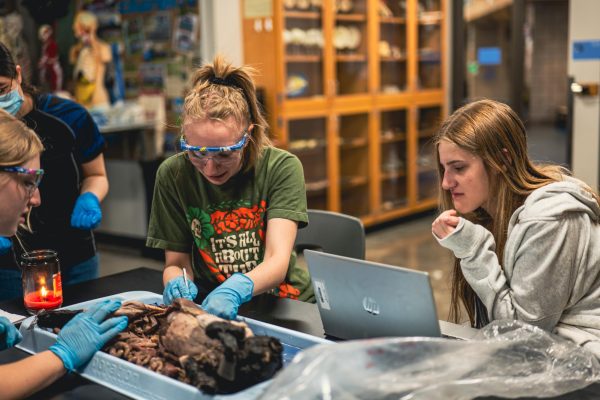
(Josiah Payne)
Overall, as a photographer I learned a lot about why students are encouraged to do these labs. Dissections like these will help students after high school if they’re wanting to pursue a career in Human Anatomy.
“And you don’t get that experience just by looking at online images or coloring images. I mean, they definitely help give you a foundation. But it’s not until you’re really looking at the real deal, that I think you get a fuller appreciation of the complexity of all the systems working together,” Sims concluded.
